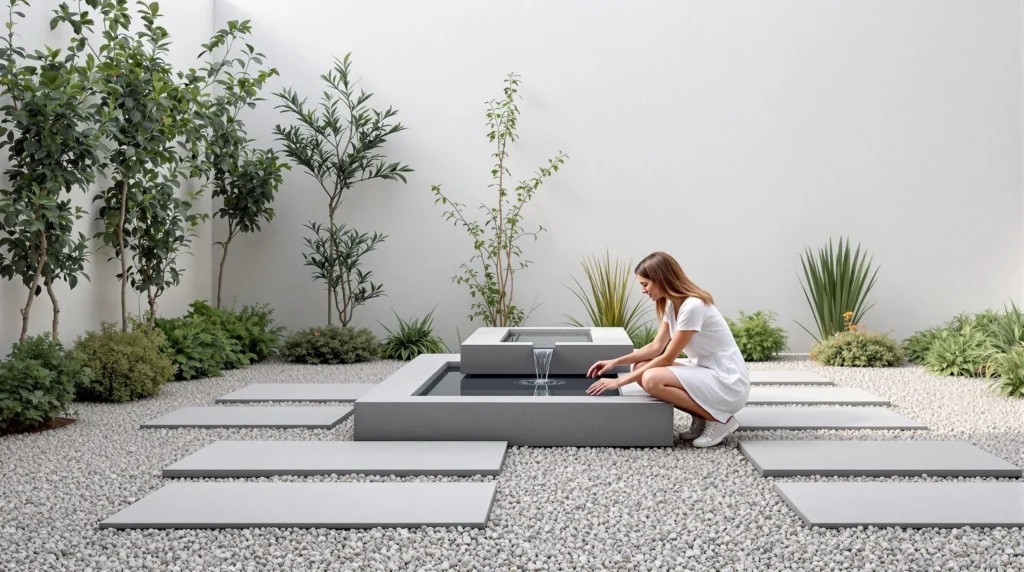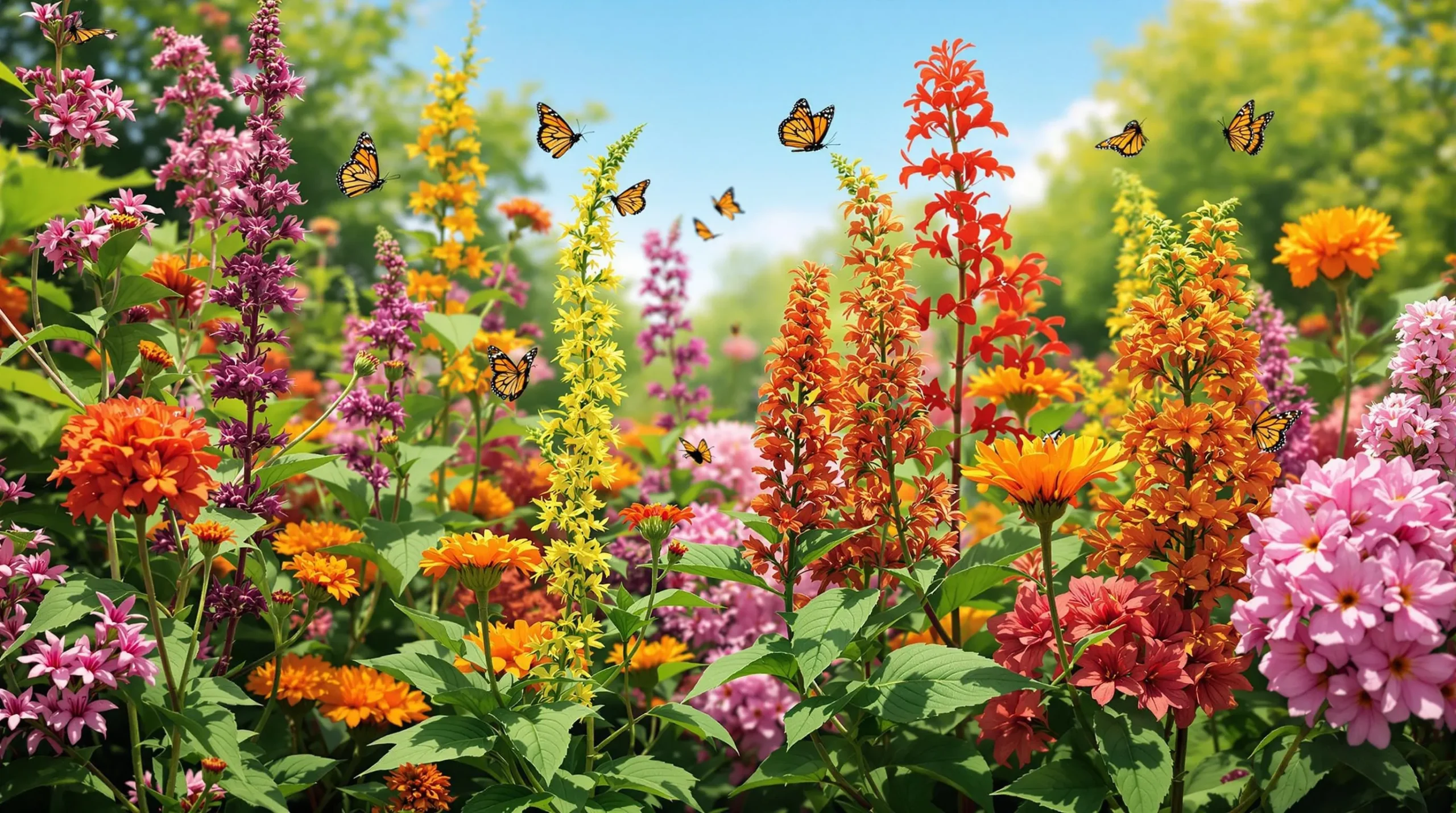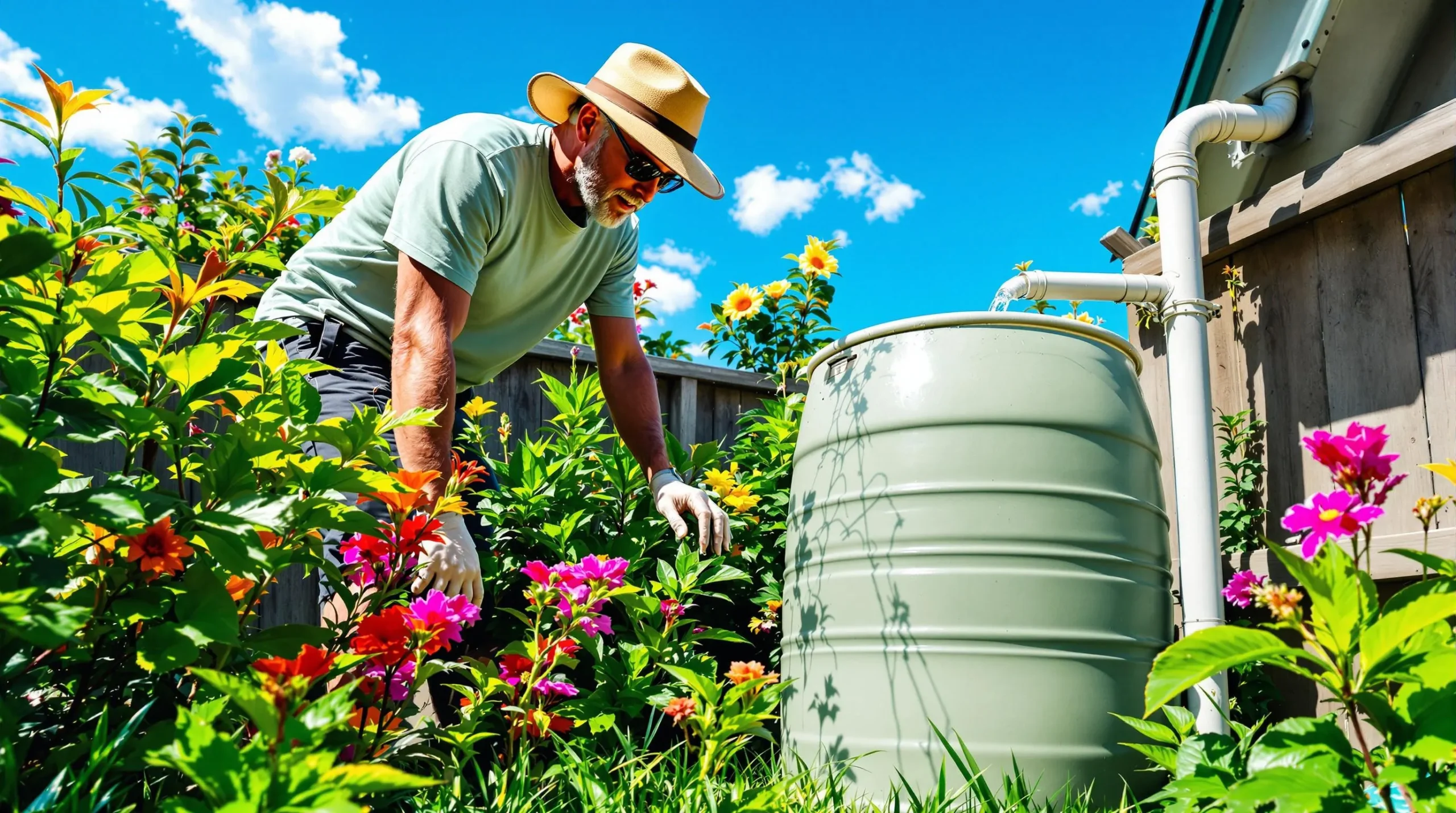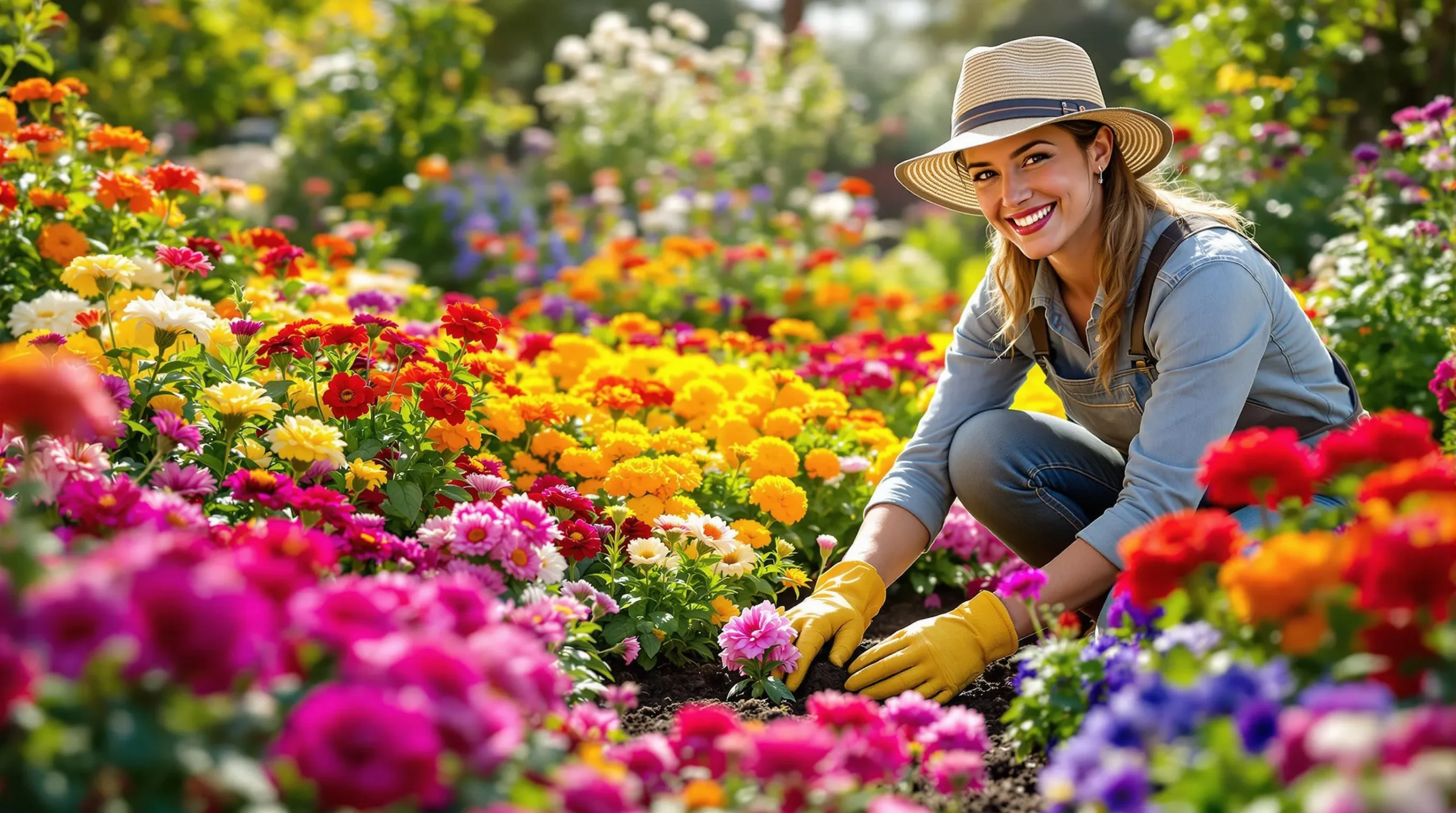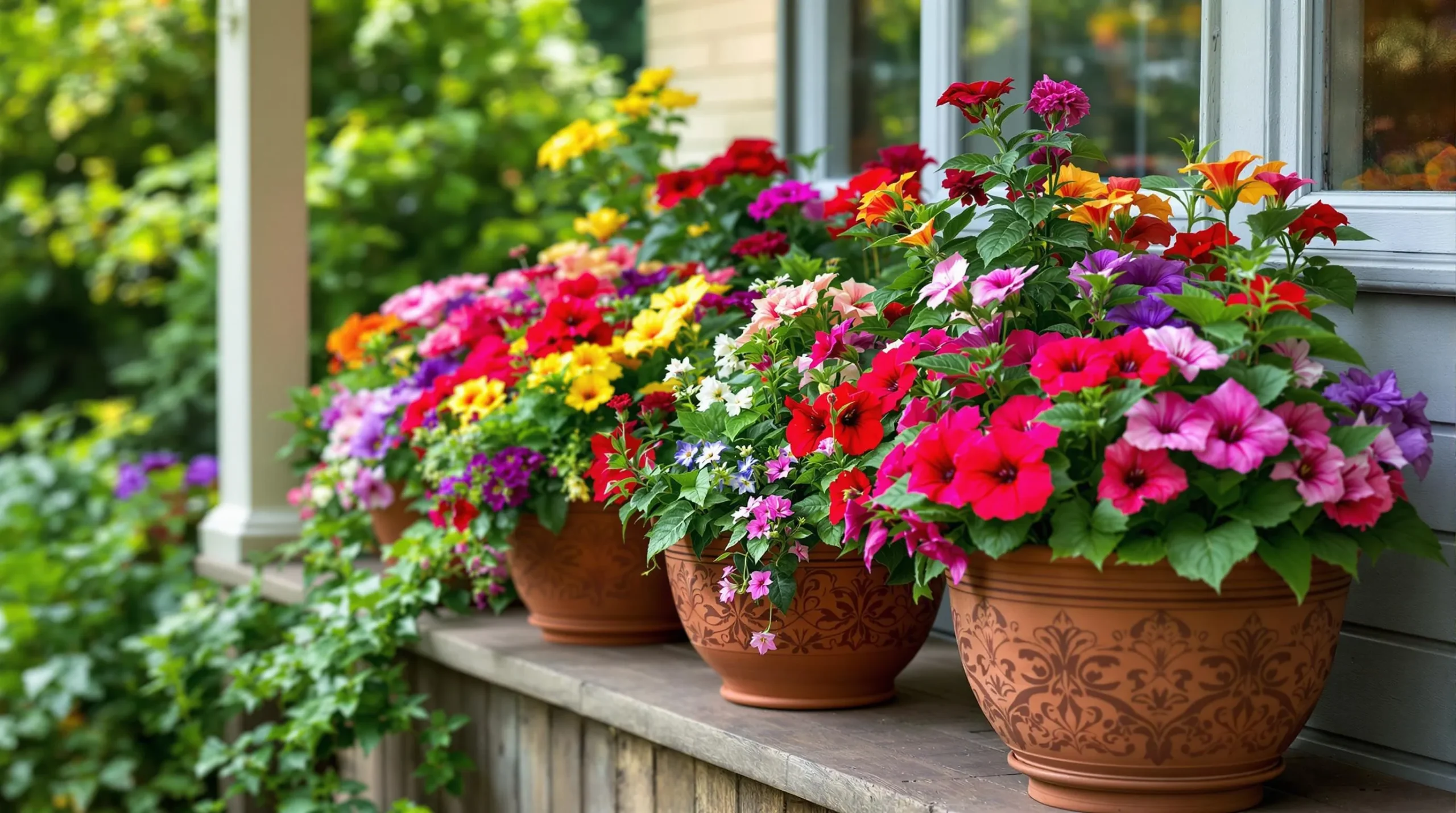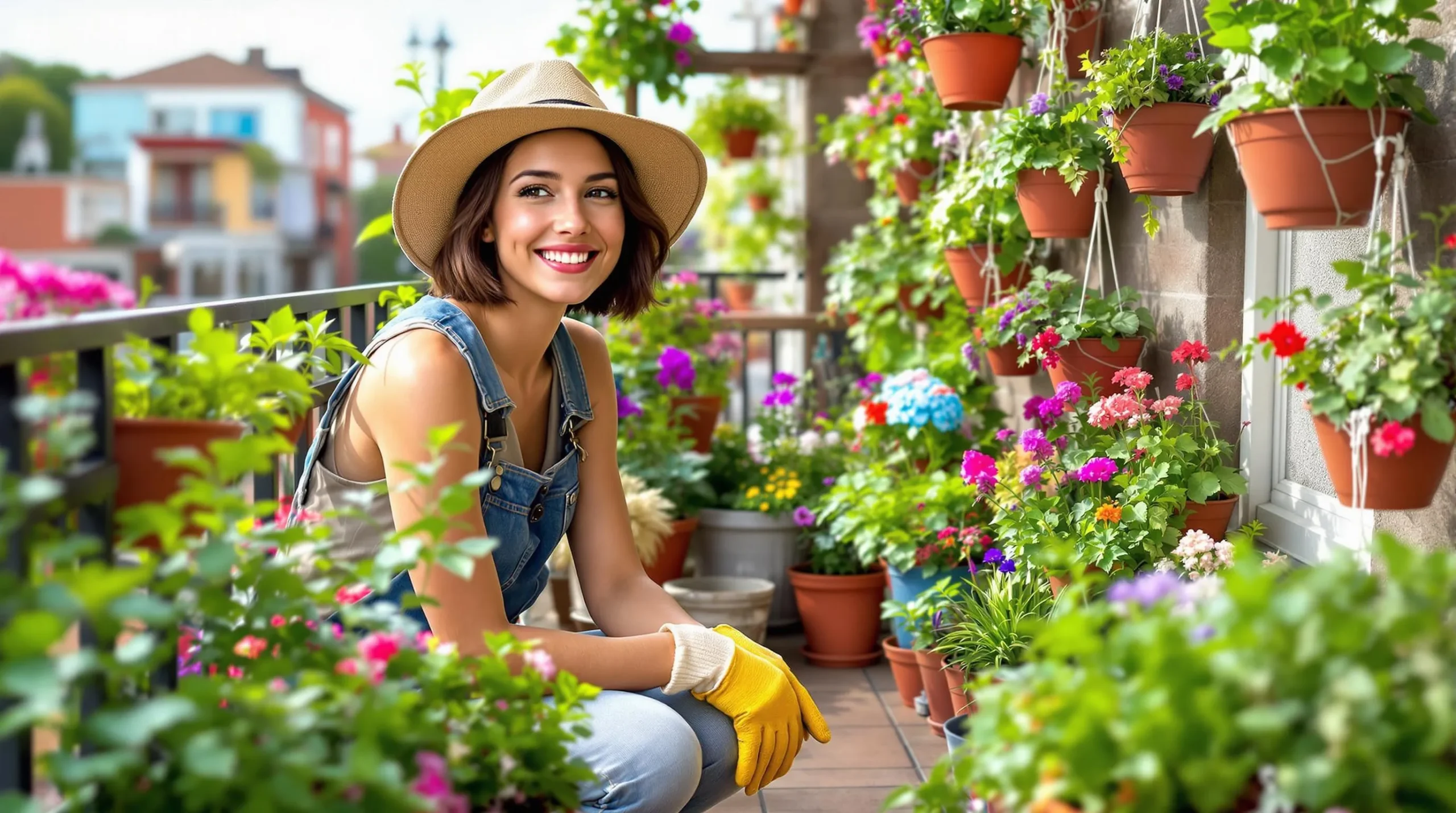10 Elegant Minimalist Garden Ideas for a Serene Outdoor Space
1. Zen Rock Gardens
Create a peaceful Zen-inspired space using carefully arranged rocks, raked gravel, and sparse plantings. Position larger stones as focal points surrounded by neatly raked patterns in fine gravel or sand. Add just a few architectural plants like Japanese maples or ornamental grasses for subtle movement and texture. This low-maintenance design requires minimal upkeep while delivering maximum tranquility.
2. Monochromatic Plant Schemes
Embrace simplicity with a single-color plant palette throughout your garden. White flowering plants like hydrangeas, roses, and gardenias create an elegant, moonlit effect against green foliage. Alternatively, focus on various shades of green by mixing ferns, hostas, and ornamental grasses for subtle texture variations. This approach creates visual harmony and makes your outdoor space feel larger and more cohesive.
3. Geometric Hardscaping
Incorporate clean lines and geometric patterns in your garden’s structural elements. Use rectangular pavers with thin grass strips between them, install square planting beds, or add circular fire pits surrounded by linear seating. These structured elements establish order and provide the perfect framework for minimal plantings. The contrast between precise hardscaping and softer plant forms creates visual interest without clutter.
4. Container Clustering
Group similar containers in odd numbers (3, 5, or 7) for an organized yet visually captivating display. Choose pots in identical materials and colors—like matte black ceramic or brushed concrete—and fill them with sculptural plants such as snake plants, succulents, or ornamental grasses. This approach works perfectly for patios, balconies, or garden corners where you want controlled visual impact.
5. Water Features with Clean Lines
Add a simple water feature with geometric shapes and clean edges. A rectangular reflection pool, square stone basin, or slim water channel provides moving water without ornate decorations. The sound of water adds sensory richness while reflecting sky and surrounding plants. Modern water features require minimal maintenance when properly installed with recirculating pumps.
6. Negative Space Utilization
Embrace emptiness as a design element by intentionally leaving open areas in your garden. Allow expanses of clean gravel, empty deck space, or unplanted lawn to create breathing room between plantings and features. This negative space directs attention to carefully selected focal points and prevents visual overwhelm. Remember, in minimalist design, what you leave out is as important as what you include.
7. Statement Specimen Plants
Select one or two extraordinary plants as focal points rather than filling your garden with many varieties. Japanese maples, sculptural olive trees, or architectural agaves create dramatic visual impact when given space to shine. Position these statement plants where they can be viewed from multiple angles and provide them with ample room to display their natural form without crowding.
8. Hidden Functionality
Integrate practical elements seamlessly into your design through clever concealment. Install bench seating with hidden storage underneath, use sleek cabinets for garden tool storage, or incorporate irrigation systems that remain out of sight. This approach maintains clean lines while ensuring your garden remains functional and practical for everyday use.
9. Subtle Lighting Answers
Carry out understated lighting that highlights key features without overwhelming the space. Recessed path lights, subtle uplighting on specimen plants, or minimalist pendant lights create atmosphere without visible fixtures dominating the design. Solar options eliminate unsightly wiring while providing sustainable illumination for evening enjoyment of your serene outdoor retreat.
10. Seasonal Simplicity
Design your garden to showcase subtle seasonal changes rather than requiring constant replanting. Choose perennials, grasses, and shrubs that offer year-round structure but transform naturally through the seasons. Deciduous trees with exceptional fall color, ornamental grasses that catch winter light, or spring-blooming shrubs provide changing interest while maintaining your garden’s minimalist aesthetic throughout the year.
Embracing Clean Lines with Geometric Plant Beds
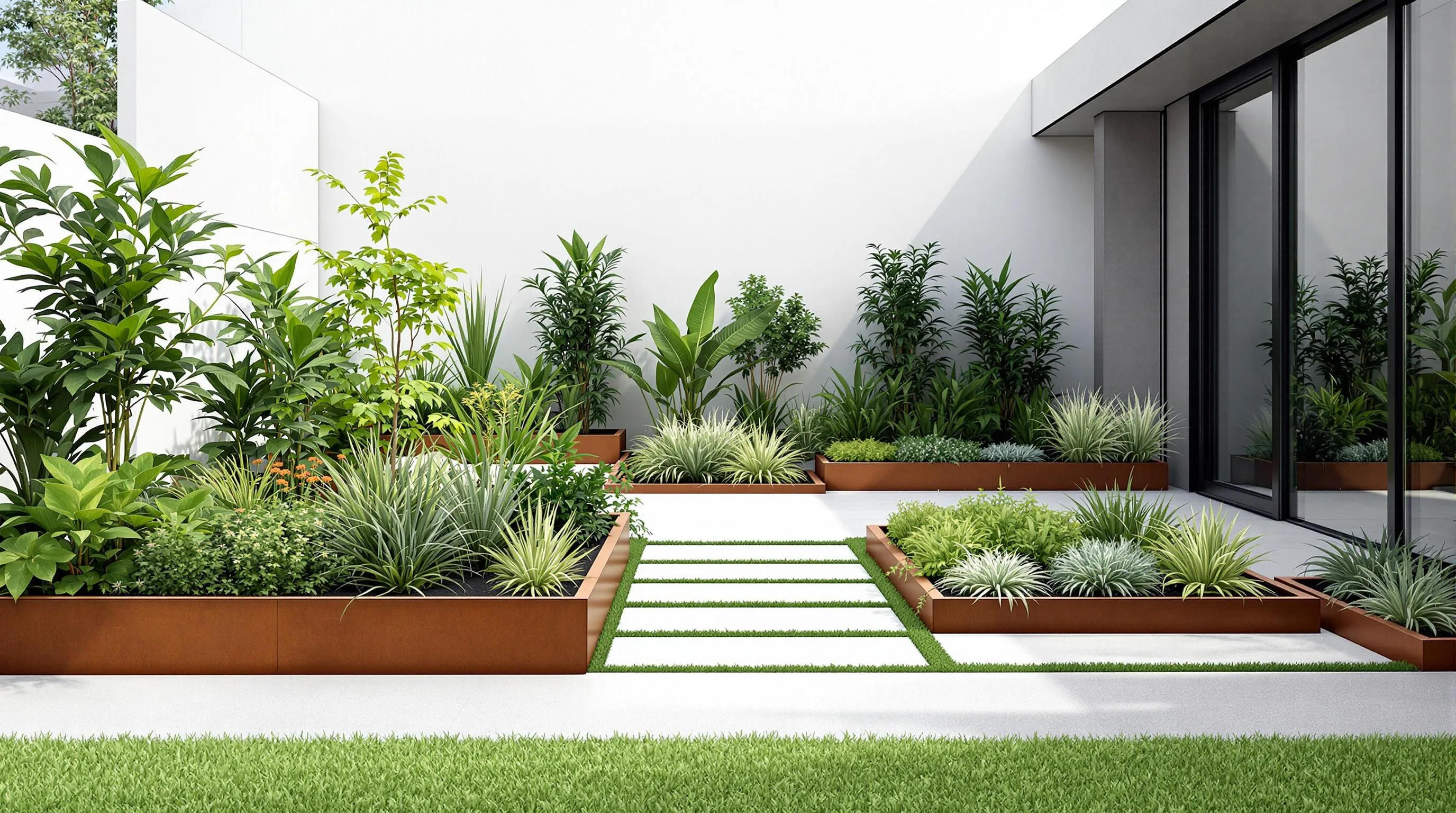
Geometric plant beds form the backbone of minimalist garden design, creating structure and visual interest through clean, deliberate lines. These precisely shaped planting areas transform ordinary gardens into sophisticated outdoor spaces where order and intention take center stage.
Using Concrete or Metal Edging for Definition
Strong edging materials are essential for achieving crisp geometric beds in your minimalist garden. Concrete edging offers durability and a contemporary feel, creating permanent boundaries that maintain their shape through seasons. Metal edging, particularly corten steel or aluminum, provides sleek definition with a modern industrial aesthetic that weathers beautifully over time. For budget-friendly options, consider powder-coated steel edging in black or gray tones that visually recede while maintaining clean lines. Install your edging with precise angles and level surfaces to enhance the intentional design of your minimalist space.
Creating Visual Impact with Simple Shapes
Simple geometric shapes deliver maximum visual impact with minimal complexity in minimalist gardens. Square or rectangular beds create order and symmetry, making them ideal for formal minimalist designs. Circular beds introduce softer elements while maintaining geometric precision, perfect as focal points in otherwise angular layouts. For more ever-changing spaces, consider triangular beds that create natural direction and flow. Position your geometric beds in relation to viewing angles from your home or seating areas to maximize their visual impact. Fill these defined spaces with carefully curated plants in limited varieties to maintain the clean aesthetic while providing textural contrast against the structured edges.
Selecting a Limited but Striking Plant Palette
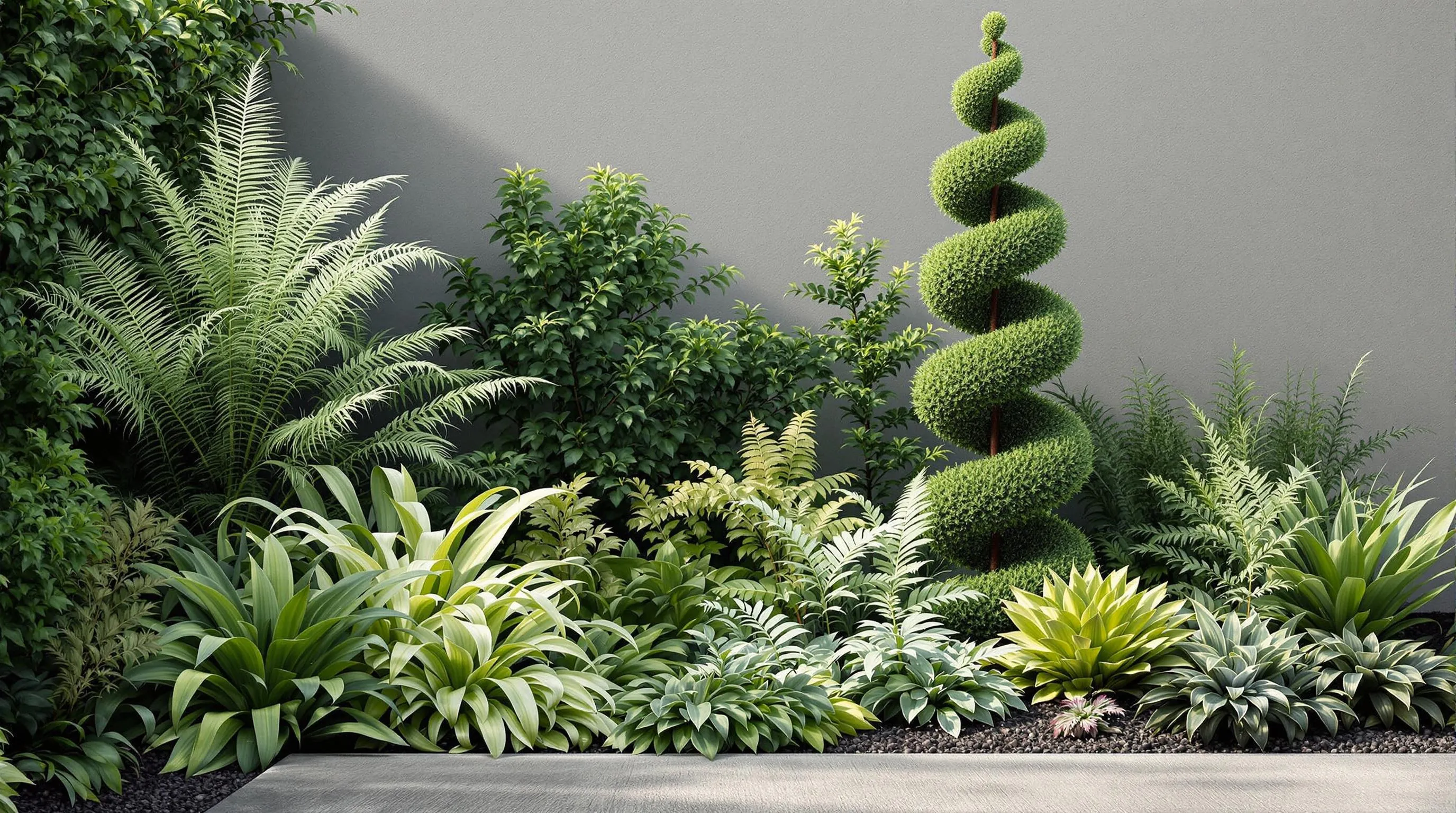
In minimalist garden design, less truly becomes more when it comes to plant selection. A carefully curated collection of plants creates visual impact without overwhelming the space, allowing each specimen to truly shine.
Focusing on Texture Over Color Variety
Prioritize textural contrast rather than a rainbow of colors to create visual interest in your minimalist garden. Select plants with distinctive leaf structures—pair feathery ferns with broad-leaved hostas or combine spiky ornamental grasses with rounded boxwood shrubs. This approach maintains the clean aesthetic while providing subtle complexity that changes with light and seasons. Limiting your color palette to predominantly greens with perhaps one accent color creates a sophisticated, cohesive look that feels intentional rather than chaotic. Consider plants like Japanese forest grass, blue fescue, and silver-toned artemisia that offer textural variety while maintaining a restrained color scheme.
Incorporating Architectural Plants as Focal Points
Select statement plants with strong structural elements to serve as anchors in your minimalist garden. Plants with distinctive silhouettes like spiral junipers, columnar cypress, or sculptural agave command attention without requiring companions. Position these architectural specimens strategically—perhaps centered in a geometric bed or at the end of a pathway—to create natural focal points. These bold plant choices eliminate the need for many varieties, as their dramatic forms provide sufficient visual interest on their own. For maximum impact, ensure adequate negative space around these specimens, allowing their unique shapes to be fully appreciated against a simple backdrop of hardscaping or a limited groundcover.
Integrating Natural Stone Elements for Timeless Appeal
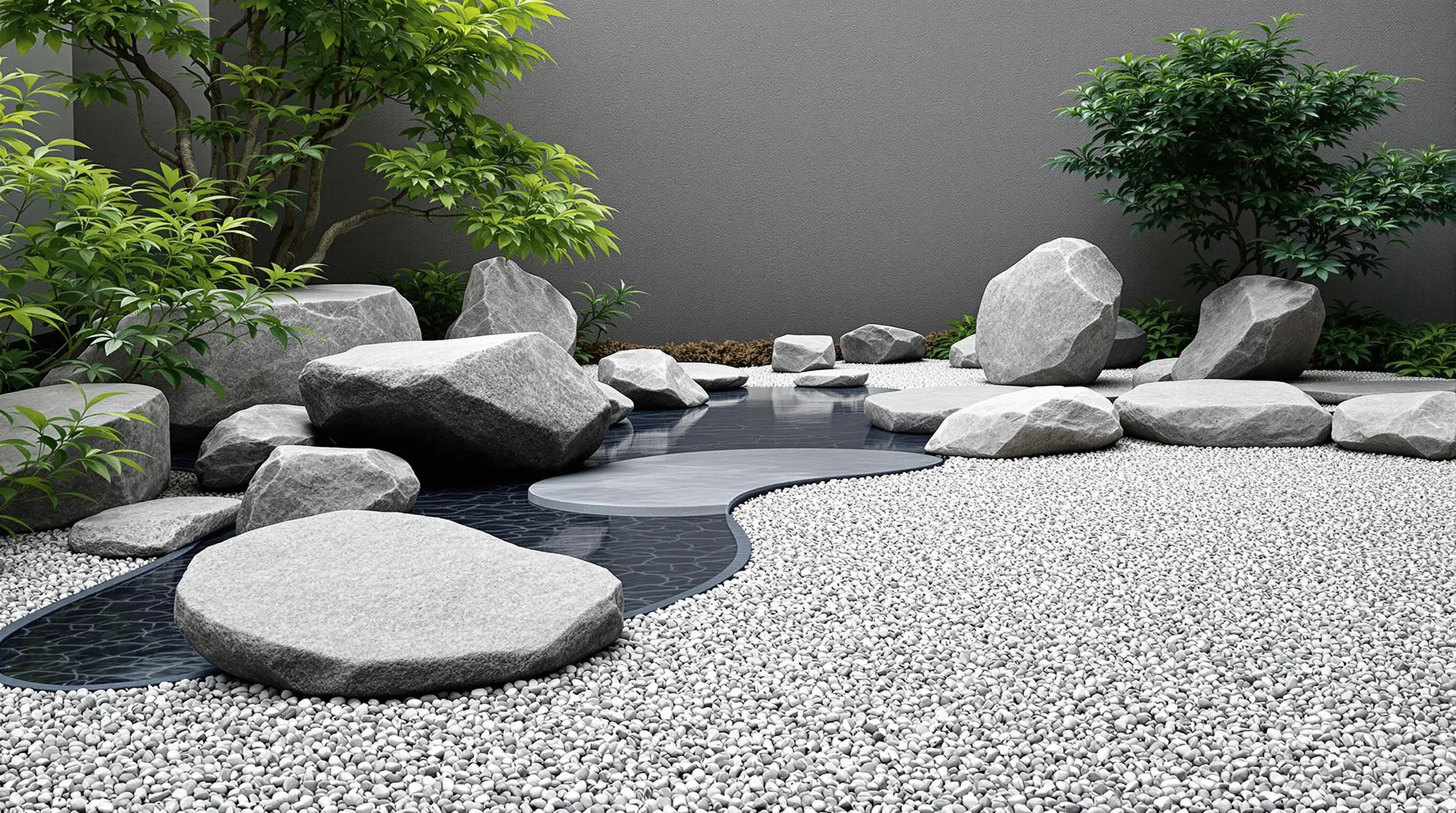
Natural stone elements provide the perfect foundation for minimalist gardens, offering organic texture while maintaining clean lines. These enduring materials connect your garden to the earth while requiring virtually no maintenance.
Choosing Monochromatic Stone Materials
Select stones in a consistent color palette to create visual harmony in your minimalist garden. Opt for slate, limestone, or granite in similar tones—whether cool grays, warm tans, or crisp whites—to establish a cohesive look. Using a single stone type throughout your garden simplifies the visual experience and creates a sense of intentional design. Consider how the stone coloration will complement your limited plant palette and architectural elements. For maximum impact, choose stones with subtle texture variations rather than dramatically different patterns that might disrupt the peaceful aesthetic you’re cultivating.
Creating Zen-Inspired Rock Arrangements
Position larger stones as focal points amid smaller pebbles to create contemplative rock gardens that require minimal maintenance. Draw inspiration from Japanese karesansui gardens by arranging rocks to represent natural landscapes—mountains rising from the sea or islands in a flowing river. Leave ample negative space between elements to allow each stone’s form to be appreciated. Add fine gravel or sand that can be raked into patterns symbolizing water or wind, creating a meditative feature that changes with the light throughout the day. These arrangements work particularly well in difficult growing areas or as low-maintenance alternatives to traditional planted beds.
Designing Thoughtful Negative Space Between Elements
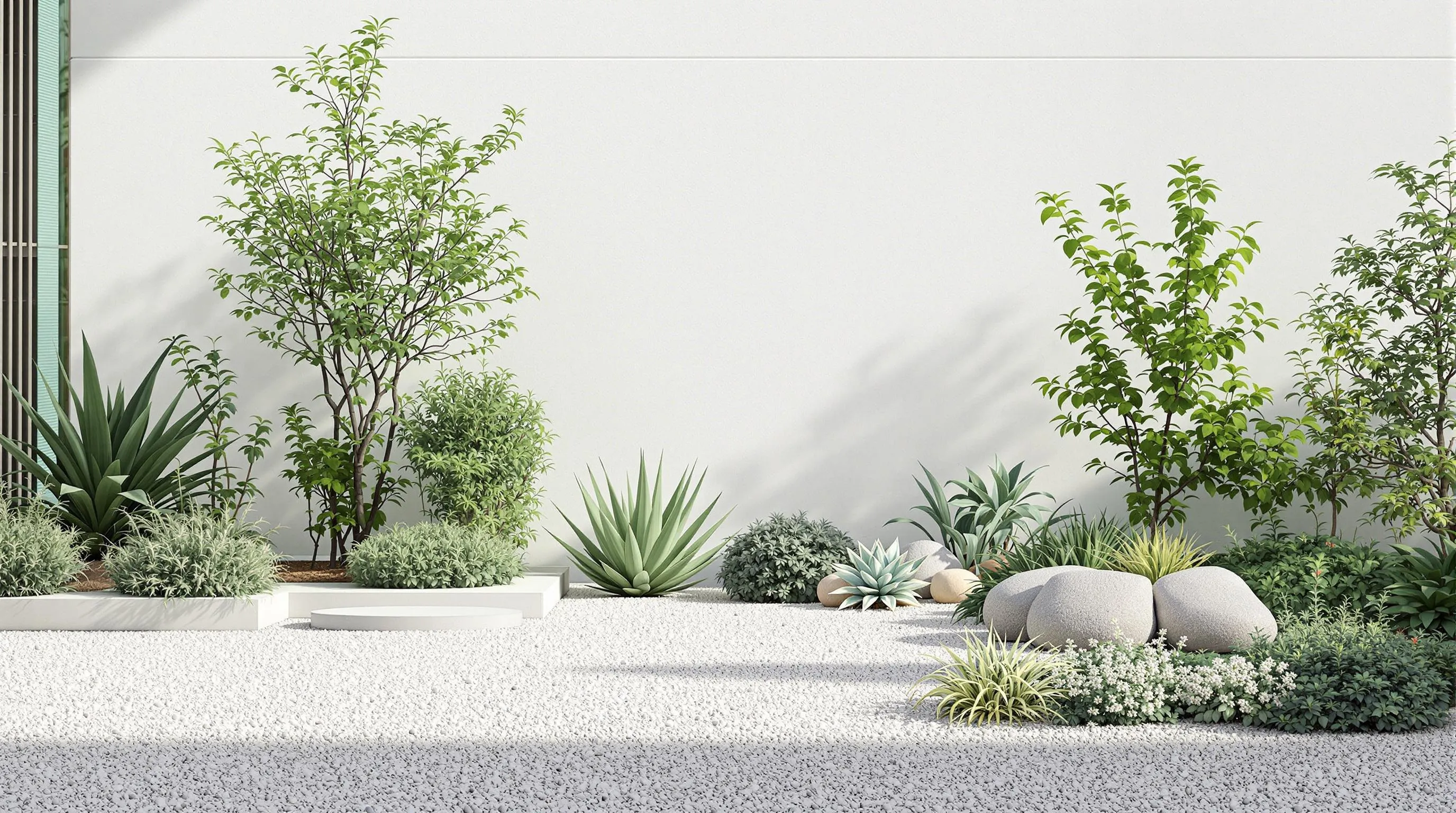
Negative space is the unsung hero of minimalist garden design, creating visual breathing room that allows each element to stand out. Thoughtful placement of empty areas throughout your garden enhances the impact of your carefully selected plants and features while promoting a sense of calm.
Balancing Planted Areas with Open Areas
Strategic balance between planted and open spaces creates the foundation for a successful minimalist garden. Aim for a 40/60 ratio of planted to open areas to achieve visual harmony without overcrowding. This intentional restraint prevents visual fatigue and allows each plant to become a true focal point. Position your plantings with purpose, considering how they’ll interact with adjacent empty spaces as they mature. Leave sufficient room between specimen plants—at least twice their mature width—to highlight their individual forms. This thoughtful spacing creates a garden that feels both curated and serene, where your eye can rest between points of interest rather than being overwhelmed by constant stimulation.
Utilizing Gravel or Sand for Minimalist Ground Cover
Fine gravel and sand serve as ideal ground covers in minimalist gardens, offering clean visual planes that define space without competing for attention. Choose monochromatic materials like white marble chips, black basalt, or neutral decomposed granite that complement your overall color scheme. These materials create textural contrast with planted areas while maintaining simplicity. For maximum impact, use rake patterns in larger expanses of fine gravel to add subtle movement and dimension—straight lines for contemporary designs or gentle curves for more organic aesthetics. Beyond their visual appeal, these permeable surfaces provide practical benefits, including excellent drainage, weed suppression, and reduced maintenance compared to traditional lawns. Install proper edging to maintain crisp boundaries between your gravel areas and plantings, preserving the clean lines essential to minimalist design.
Installing Simple Water Features for Movement and Sound
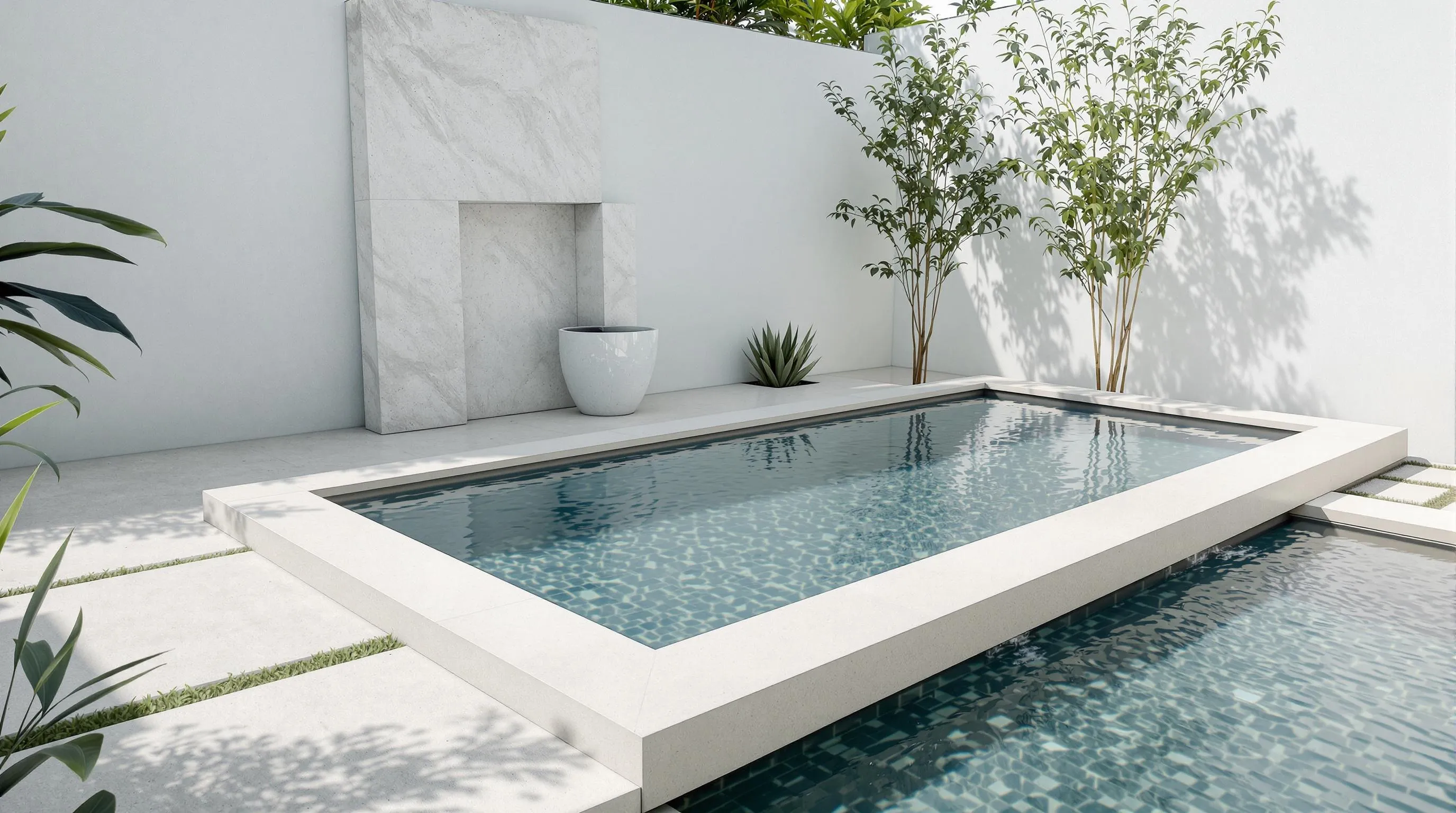
Water elements bring essential movement and soothing sounds to minimalist gardens without disrupting their clean aesthetic. These features create a multisensory experience while maintaining the garden’s serene simplicity.
Considering Reflection Pools with Clean Edges
Reflection pools offer a stunning minimalist water feature with maximum impact and minimal fuss. Choose geometric shapes with crisp, straight edges to maintain your garden’s clean lines. Square or rectangular pools with dark liners create mirror-like surfaces that reflect the sky and surrounding plants, effectively doubling their visual impact. For true minimalism, keep the pool’s edge flush with surrounding paving or elevate it slightly with a thin concrete lip. Position your reflection pool where it can capture interesting reflections—beneath architectural plants or alongside a textured wall. Unlike complex water features, these pools require simple filtration systems and minimal maintenance, perfectly aligning with minimalist principles of simplicity and functionality.
Adding Subtle Fountains with Modern Design
Modern fountains bring gentle movement and ambient sound to your minimalist garden without visual clutter. Look for designs with clean lines and simple forms—single spouts emerging from stone slabs, stainless steel tubes, or concrete blocks make perfect minimalist statements. Wall-mounted options save space while creating vertical interest, and sphere fountains with water flowing over their surfaces add sculptural elements. Install fountains against neutral backgrounds to highlight their form and the water’s movement. For ultimate simplicity, consider a small bubbling rock where water gently wells up from a drilled stone before recirculating. These modest water features provide sensory richness without overwhelming your garden’s restrained design, creating focal points that engage multiple senses while maintaining your space’s peaceful atmosphere.
Incorporating Minimalist Garden Furniture and Accessories
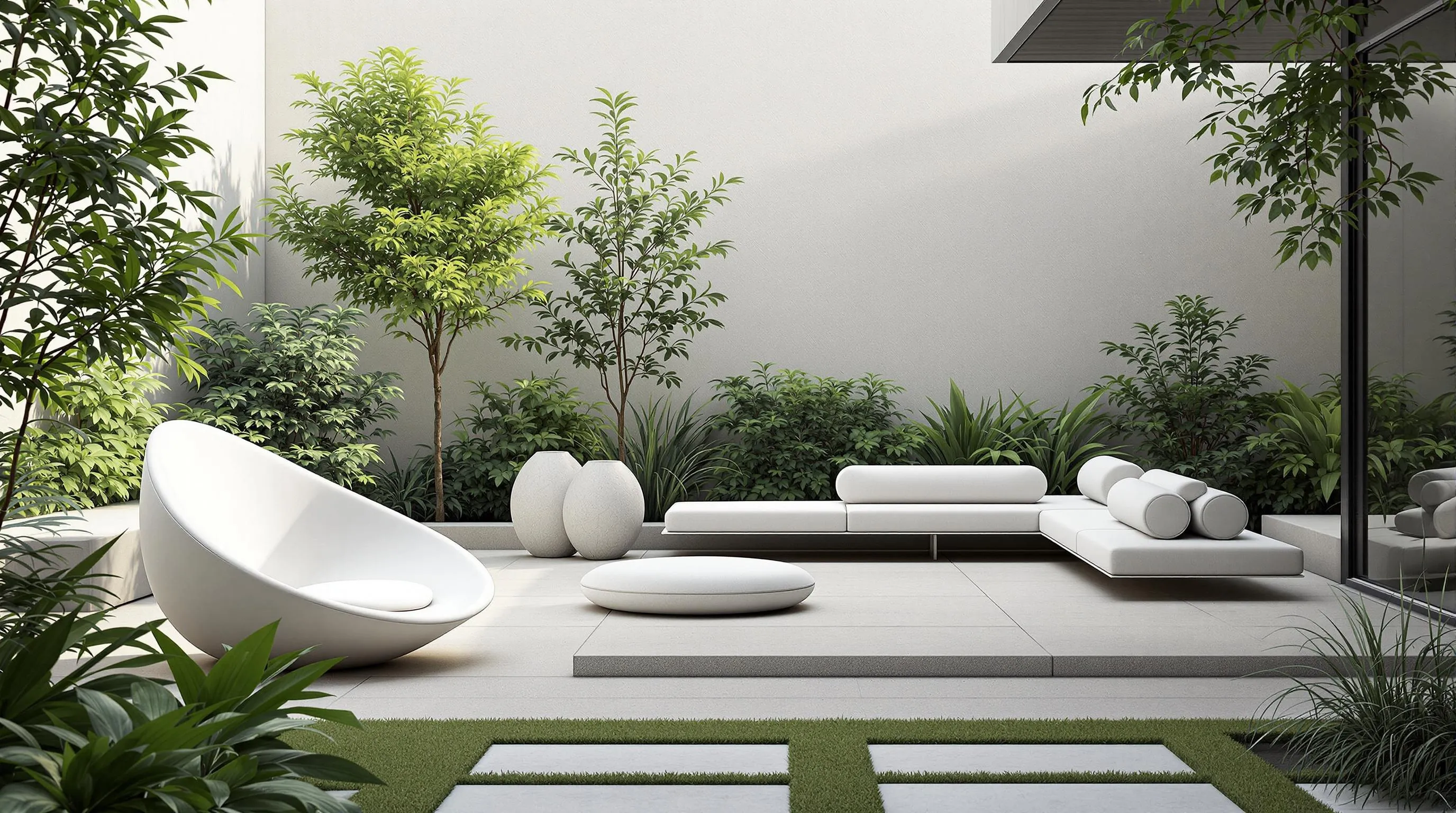
Selecting Statement Pieces with Simple Forms
Choose garden furniture with clean lines and geometric shapes to maintain your minimalist aesthetic. Bench seating with straight edges or rounded corners creates visual harmony without overwhelming the space. Select just one or two statement pieces—a sculptural chair, a floating bench, or a sleek dining set—rather than filling the garden with multiple furniture items. These focal pieces should serve as anchors in your design, providing both function and visual interest. Consider multi-purpose furniture like storage benches or convertible tables that maximize utility while minimizing clutter. Remember to position furniture thoughtfully, allowing ample negative space around each piece to highlight its form and prevent the garden from feeling crowded.
Choosing Materials That Complement the Industry
Select furniture materials that echo your garden’s existing elements for a cohesive look. Natural materials like teak, concrete, and powder-coated steel offer durability while maintaining clean lines essential to minimalist design. Opt for weatherproof fabrics in neutral tones—whites, grays, blacks, or earth tones—to create a seamless transition between your hardscaping and furniture elements. Avoid ornate details or busy patterns that distract from the garden’s serene atmosphere. Materials with subtle texture variations, such as brushed metal or hand-finished concrete, add depth without compromising simplicity. For accessories, incorporate items made from natural materials like ceramic planters, stone water features, or woven baskets that enhance rather than compete with your garden’s peaceful ambiance.
Creating Visual Interest with Strategic Lighting
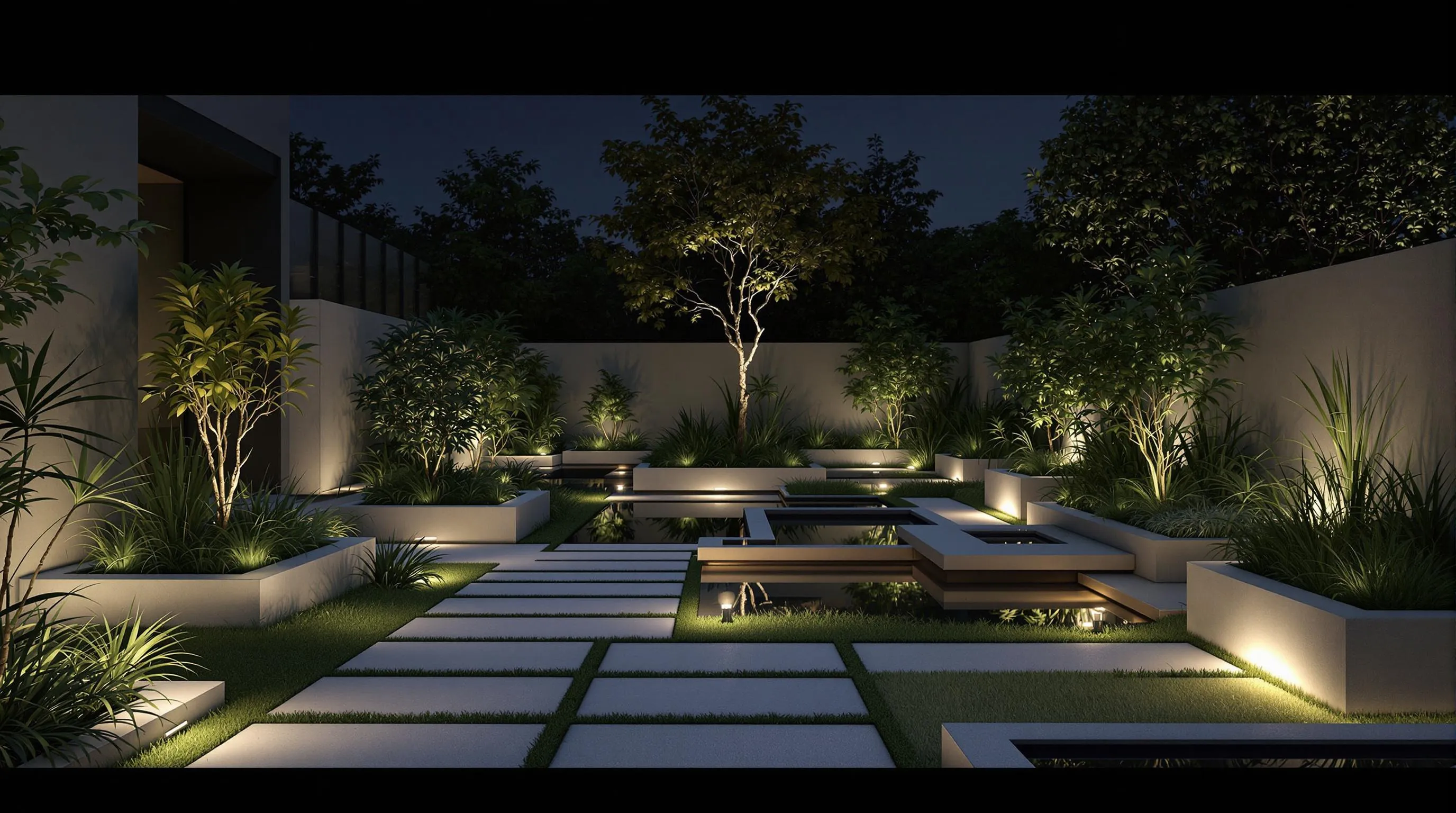
In minimalist gardens, lighting isn’t just functional—it’s groundbreaking. Strategic illumination creates depth, texture, and drama while maintaining clean aesthetics, turning your minimal outdoor space into an enchanting nighttime retreat.
Using Recessed or Hidden Light Sources
Recessed lighting perfectly complements minimalist design by providing illumination without visible fixtures. Install slim LED strips along pathways or underneath benches to create floating effects that preserve clean lines. Ground-level lights can be concealed among gravel or embedded into hardscaping for subtle upward illumination that casts intriguing shadows. Try placing waterproof LED strips beneath water features to create an ethereal glow that emphasizes geometric shapes after sunset. Hidden lighting sources maintain daytime simplicity while revealing new dimensions of your garden’s architecture when darkness falls.
Highlighting Key Garden Features After Dark
Transform your minimalist garden after sunset by strategically illuminating focal points. Direct soft spotlights at specimen plants to showcase their architectural silhouettes against dark backgrounds. Geometric plant beds gain dramatic definition when their edges are subtly lit from below, emphasizing their clean lines. Illuminate water features with submersible lights to capture rippling reflections that add movement without clutter. For rock arrangements, position lights at low angles to enhance texture through shadow play. Limit yourself to highlighting just 2-3 key elements to maintain visual restraint—remember that in minimalist lighting, negative space is as important as illuminated areas. Use warm white lights (2700-3000K) for natural ambiance that doesn’t overpower your garden’s serene atmosphere.
Maintaining Year-Round Structure with Evergreens
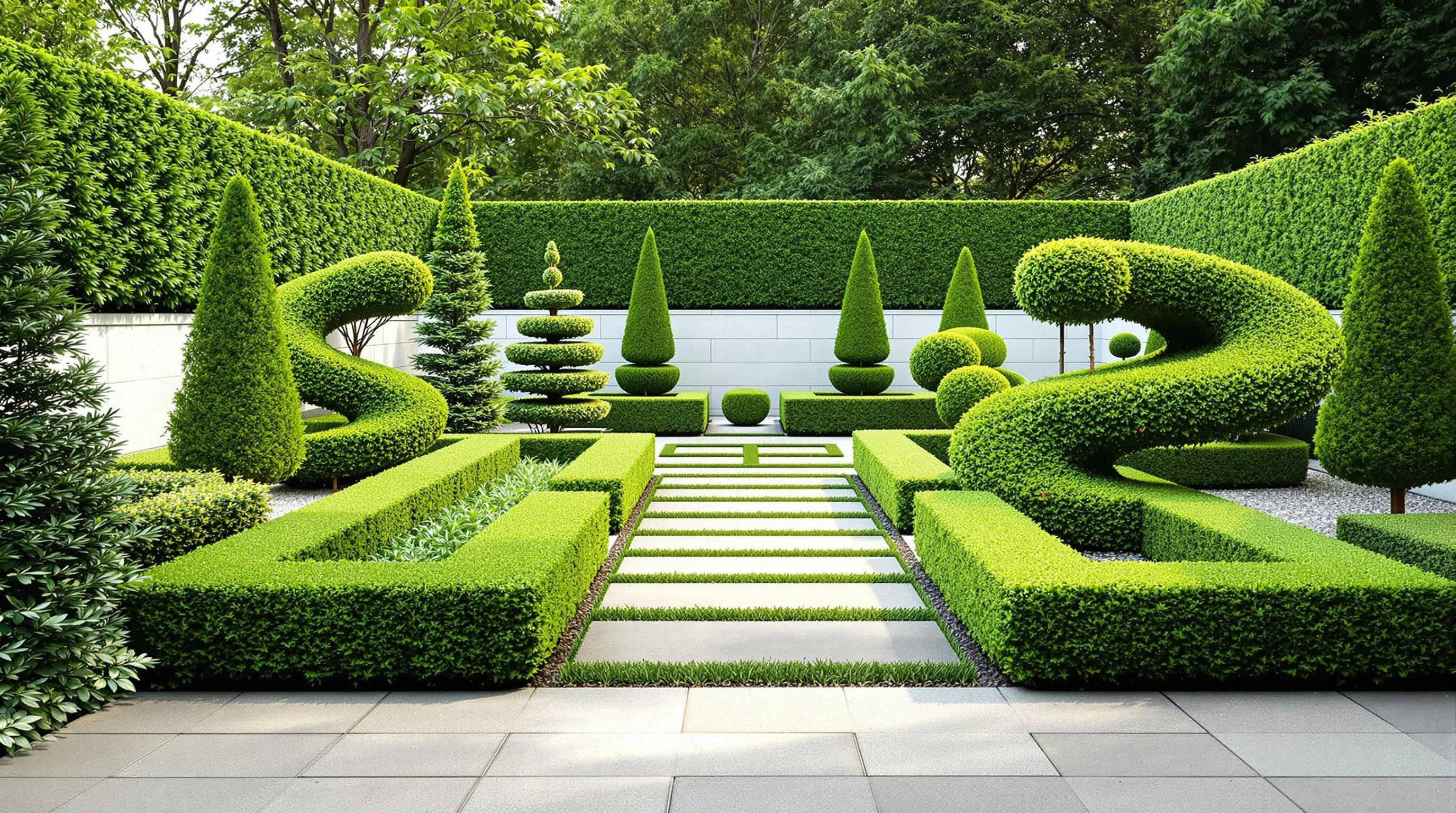
Evergreens provide the backbone of a minimalist garden, offering consistent structure and form throughout all seasons when deciduous plants lose their foliage. Their steadfast presence creates a reliable framework that anchors your design even during winter months.
Selecting Slow-Growing Varieties for Less Maintenance
Choose slow-growing evergreen varieties to minimize maintenance while maximizing visual impact in your minimalist garden. Dwarf conifers like Juniperus squamata ‘Blue Star’ and Picea pungens ‘Globosa’ grow just a few inches annually, requiring pruning only every 2-3 years. Compact boxwood cultivars such as Buxus ‘Green Velvet’ maintain their neat form with minimal intervention, making them perfect for clean-lined designs. Japanese holly (Ilex crenata) offers an excellent alternative to boxwood with similar aesthetic qualities but greater resistance to common boxwood diseases. For texture contrast, consider blue-toned Festuca glauca or architectural Phormium varieties that hold their shape year-round without aggressive spreading. By selecting these restrained growers, you’ll create lasting structure without the constant maintenance that faster-growing species demand.
Creating Green Architecture with Topiary
Transform simple evergreens into living sculptures through thoughtfully shaped topiary that provides striking architectural elements in your minimalist garden. Focus on clean geometric forms—spheres, cubes, and cones—that complement modern garden aesthetics while avoiding overly complex shapes that can appear busy. Taxus (yew) and Buxus (boxwood) make excellent topiary subjects due to their dense growth habits and ability to maintain crisp edges. Position these sculpted elements strategically as punctuation points along pathways or as sentinel pairs flanking entrances. For truly low-maintenance options, consider pre-formed topiary in containers that can be repositioned as needed. The disciplined silhouettes of these green architectural features create powerful visual impact even in winter, embodying the “less is more” philosophy central to minimalist design while providing essential structure year-round.
Planning for Low-Maintenance Care Requirements
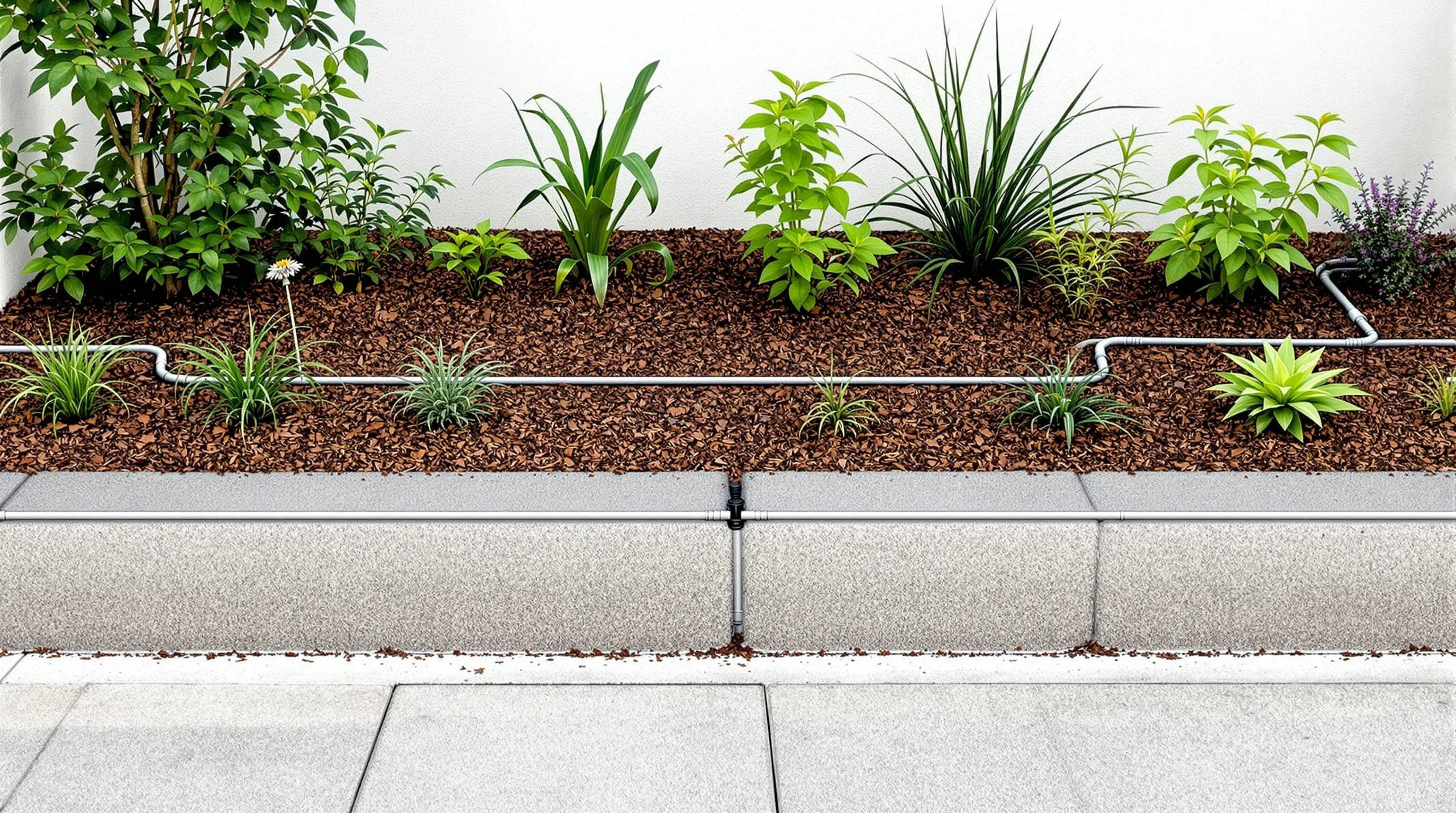
A truly minimalist garden extends beyond aesthetics to embrace efficiency in care and upkeep. By implementing smart maintenance answers, you’ll spend less time working in your garden and more time enjoying its serene beauty.
Incorporating Smart Irrigation Systems
Smart irrigation systems are essential components of a low-maintenance minimalist garden. Install drip irrigation lines beneath mulch to deliver water directly to plant roots, reducing waste and preventing evaporation. Modern systems connect to weather forecasts via smartphone apps, automatically adjusting watering schedules based on rainfall predictions and seasonal needs. For container arrangements, consider self-watering planters with water reservoirs that supply moisture gradually as needed. Position plants with similar water requirements together in hydrozones to maximize irrigation efficiency and prevent both overwatering and underwatering. These systems not only conserve water but significantly reduce the time spent on manual watering tasks.
Using Mulch to Reduce Weed Growth
Mulch is a minimalist gardener’s secret weapon against maintenance headaches. Apply a 2-3 inch layer of organic mulch like pine bark, crushed stone, or decomposed granite around plants to suppress weeds and maintain soil moisture. Choose mulch colors that complement your garden’s limited palette—dark mulches create striking contrast against light-colored plants while light-colored mulches reflect heat away from plant roots. Beyond weed suppression, quality mulch gradually breaks down to improve soil structure and provides essential nutrients to plants. For the cleanest aesthetic, create clear boundaries between mulched areas and hardscaping using metal or stone edging. Refresh mulch annually to maintain both its functional benefits and crisp appearance.
How to Achieve Minimalist Beauty Through Thoughtful Restraint
Minimalist gardening isn’t about emptiness but thoughtful restraint. By embracing geometric forms clear lines and limited color palettes you’ll create a space that feels both intentional and peaceful.
Remember that the power of minimalist design lies in what you choose to exclude. Each plant stone and design element should earn its place in your garden. Focus on quality over quantity allowing carefully selected features to shine against clean backgrounds.
Your minimalist garden will evolve into a sanctuary that requires less maintenance while delivering more visual impact. The beauty of this approach is its adaptability—whether you have a tiny balcony or sprawling yard these principles scale perfectly.
Let your outdoor space become a testament to the philosophy that in gardening as in life sometimes less truly is more.

